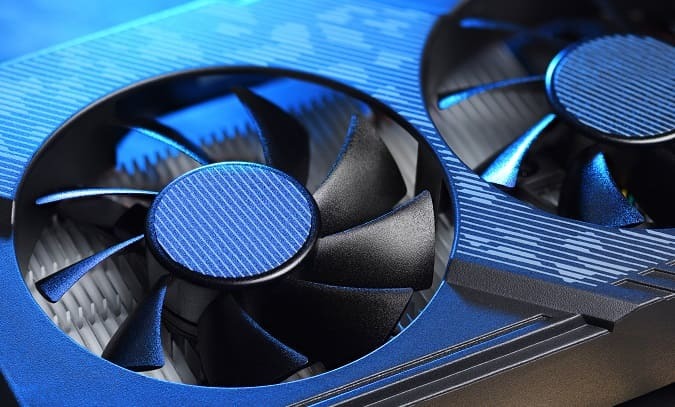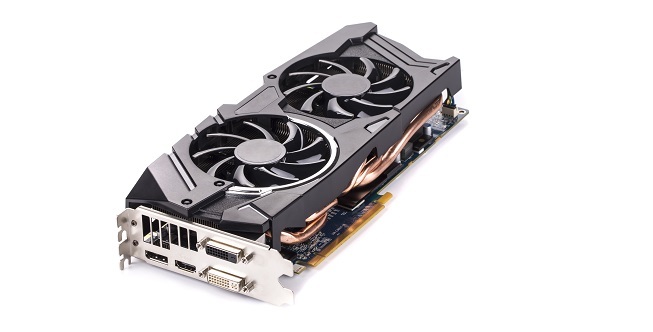
 Data Structure
Data Structure Networking
Networking RDBMS
RDBMS Operating System
Operating System Java
Java MS Excel
MS Excel iOS
iOS HTML
HTML CSS
CSS Android
Android Python
Python C Programming
C Programming C++
C++ C#
C# MongoDB
MongoDB MySQL
MySQL Javascript
Javascript PHP
PHP
- Selected Reading
- UPSC IAS Exams Notes
- Developer's Best Practices
- Questions and Answers
- Effective Resume Writing
- HR Interview Questions
- Computer Glossary
- Who is Who
What is the full form of GP?
Introduction
Graphic Port (GP) is also known as (AGP) "Accelerated Graphic Port". These ports are hardware interfaces for connecting graphic cards to personal computers. It was debuted in "1996 by Intel Corporation" for Intel Pentium (P5 and P6) processors.

It was introduced to replace the Video Card connector for Peripheral Connecting Interconnect. The GP is used in computers for frequent imaging in games and video for better graphic play.
What is GP?
Accelerated Graphics Ports are "parallel expansion Cards" that are used to connect video or graphics cards to a PC. It is a "point-to-Point Channel" used for displaying high-speed video output.
It displays 3-D images more quickly than a standard display unit.
It is interconnected with the motherboard of the CPU and runs at processors.
It stores the images in the main memory for quick display.
It is a "32-bit" wide channel that runs at "66MHz of 266 MBps bandwidth".
The colour of the AGP connector is brown.
Components of GP
The Graphic Ports were developed by "Intel corporation in 1996 for Socket 7 of Intel Pentium-5 and Socket-1 of Pentium-6 processor". It has the following components,
Pipelining It can pipeline in the system that enables it to receive and send multiple instructions in one shot which improves the data transfer speed.
Sideband Addressing In the GPs slot, there is an extra data pocket. This keeps the extra information in the system from where the data is used.
Texture Maps Storage Texture maps are stored in system memory by an Accelerated graphic port. It helps in the high and quick data processing.
GP Interface
Graphic cards are attached to Input output ports or interfaces. These are D-Sub output Port, S video output port, DVI Output port, RCA output port, D-connector, Video Input port, modular input and output block connectors, etc. There various interfaces of AGP some are
AGP 1.0 Interface Its clock speed is 66 MHz and 266 MB/s and 533 MB/s transfer rate.
AGP 2.0 Interface Its clock speed is 66 MHz and speed four times of version one with 1066 MB/s speed.
AGP 3.0 Interface with 66 MHz clock speed and 8 times transfer rate i.e. 2133 MB/s.
Type of Ports for Graphic Interface
D-Sub Output Port It is 15 pin port used for connecting the monitor, it supports analogue input.
S-Video Output Port It is a five-pin S-video port, it separates the luminance and colour signal to avoid interference and boost signal strength.

RCA Output Port It is also known as AV or Composite Video connector. It is found in televisions and video recorders. It is separated into one video and two audio ports.
DVI Output Port It converts analogue signal to digital signal and vice versa, found in LCD's integrated Analog to digital converter.
D-Connector It is present in HDTV and used for direct conversion of digital signals.
Applications of GP
There are various applications of graphic ports. These are as follows;
It is incorporated in 3-D CAD/CAM, 3-D user interface, and data visualization devices.
It is employed in the CPU for creating 3-D images where it does 3-D calculations for processing bitmaps and texture data present in port and creates one pixel on screen from 7 to 8 textures.
It works as a connector between CPU and RAM, which allows quick delivery of graphics.
It removes the extra data by keeping the texture in the main memory and executes it immediately with the graphic chip.
Conclusion
Accelerated Graphics ports are designed for high-definition games, 3-D imaging, and other engineering graphics. It was first developed by Intel for high-definition graphics videos in Pentium CPU. It kept refreshing the screen of the monitor for better quality. It has replaced the peripheral component interconnect. There are various versions of AGP a few are AGP 1.0, AGP 2.0, and AGP 3.0.
FAQs
Q1. What is the difference between Accelerated Graphic Port and Peripheral Component Interconnect?
Ans. AGP is a port and PCI is a bus and the further one is faster than the second one. Further differences are as follows;
Accelerated Graphic Port (AGP) |
Peripheral Component Interconnect (PCI) |
|---|---|
Its clock speed is 66 MHz. |
Its clock speed is 33 MHz. |
The transfer rate of the latest version of AGI is 2133 MB/s. |
Its transfer rate is 132MB/s. |
It stores the texture maps in the main memory. |
It stores texture maps in video cards. |
It is pipelined and can process multiple requests simultaneously. |
It fulfils one request at a time. |
Q2. What are the advanatges of AGP?
Ans. Accelerated graphic ports have replaced the peripheral component interconnect. It gives a direct link between the CPU and RAM for high-speed data transfer. It stores the texture maps in the main memory and quickly transfers the data. It has reduced the cost of designing a PC by replacing separate video RAM.
Q3. What are the limitations of Graphic Ports?
Ans. Although graphic ports have various advantages it has some limitations too;
Graphic ports work on old technology, which is replaced by a new interface i.e. PCI Express which is quite faster and more reliable.
Graphic ports consume a high amount of energy.
It has restricted bandwidth which triggers the display of high graphics.

